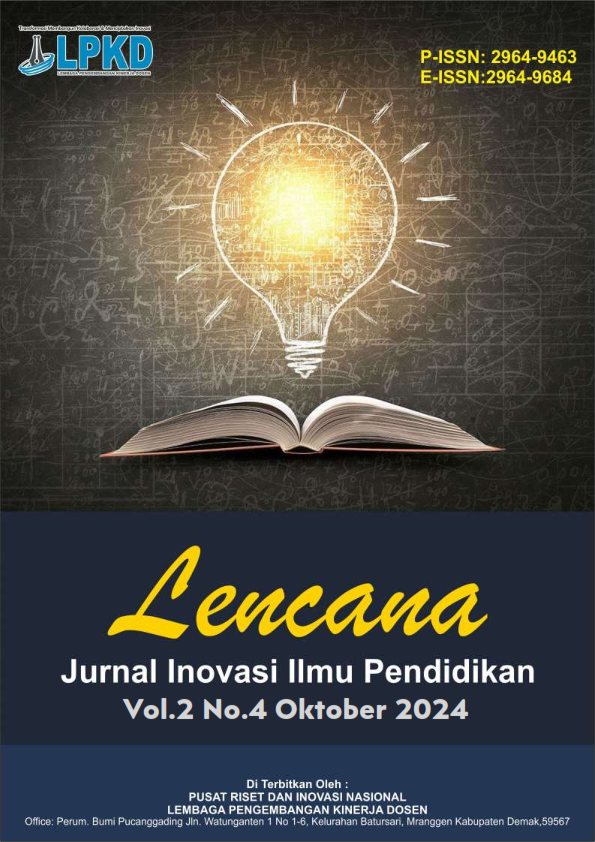Inovasi Stik Bawang dengan Penambahan Daun Kelor (Morina oleifera L.)
DOI:
https://doi.org/10.55606/lencana.v2i4.4040Keywords:
Onion Sticks, Moringa, LeavesAbstract
Onion sticks are a snack that is flat, long and resembles a stick and has a distinctive savory taste and crispy texture which is finally processed through frying. Moringa leaves are a plant with a multitude of benefits, including lowering blood sugar levels, controlling inflammation, controlling blood pressure, maintaining healthy growth and brain cells, inhibiting cancer, and increasing body resistance. The research objectives were to determine: 1) The results of the sensory quality of onion sticks with the addition of Moringa leaves, including color, taste, aroma, texture and level of preference; 2) Value of the vitamin C content of Moringa leaf sticks based on the best sensory results; 3) Selling price of Moringa leaf sticks in packages weighing 250 grams/package. This research is an experiment in making onion sticks with the addition of Moringa leaves. Using the observation method through sensory quality testing with 30 panelists. The resulting data was processed using the Anova test followed by the Duncan test. To determine the nutritional content of vitamin C, laboratory tests are carried out. The results of the research showed: 1) The best formulation of onion sticks with the addition of Moringa leaves from the sensory test was obtained from the addition of 20 grams of Moringa leaves. 2) The nutritional content of vitamin C in the product is 102.60 mg/100 gr. 3) The selling price of Moringa leaf sticks is known to be IDR 27.650 per-package weighing 250 grams.
Downloads
References
Fadiati, Ari. (2013). Mengelola Usaha Jasa Boga yang Sukses. Bandung: PT Remaja Rosdakarya
Fatimah Nursa’adah, S. (2019). Eksperimen Pembuatan Stik Komposit Tepung Terigu dan Tepung Jagung ( Zea Mays ) Dengan Penambahan Daun Kelor (Moringa Oliefera). Skripsi, 20–21. http://lib.unnes.ac.id/id/eprint/37727
Junaidi, J., Anwar, S. M., & Sari, H. (2022). Pengolahan Daun Kelor Menjadi Stick Daun Kelor Sebagai Upaya Menambah Nilai Jual Dalam Pandemi Covid-19. SELAPARANG: Jurnal Pengabdian Masyarakat Berkemajuan, 6(1), 427. https://doi.org/10.31764/jpmb.v6i1.7800
Nurwahidah. (2019). Kajian Sifat Kimia Dan Organoleptik Stik Pada Berbagai Persentase Penambahan Tepung Daun Kelor. Skripsi. http://repository.ummat.ac.id/id/eprint/432
Purwati, P. (2019). Evaluasi Daun Kelor (Moringa oleifora) Sebagai Pangan Fungsional. Jurnal Abdimas Mahakam, 3(2), 129. https://doi.org/10.24903/jam.v3i2.504
Putri, M. F., & Rahmawati, F. T. (2020). Jajanan Sehat Kaya Serat Untuk Keluarga: Pemanfaatan Tepung Bekatul Sebagai Substitusi Bahan Pembuatan Stik Bawang. JKKP (Jurnal Kesejahteraan Keluarga Dan Pendidikan), 7(02), 181–190. https://doi.org/10.21009/jkkp.072.06
Downloads
Published
How to Cite
Issue
Section
License
Copyright (c) 2024 Lencana: Jurnal Inovasi Ilmu Pendidikan

This work is licensed under a Creative Commons Attribution-ShareAlike 4.0 International License.








